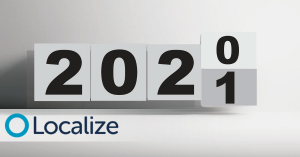Content marketing can be quite a complex affair. As a marketer, you need to work with a wide range of content formats to make your content marketing strategies as effective as possible. Statistics tell us that the average marketing organization publishes over 10 content formats.
As content marketing grows to become more complex and voluminous, you need a translation strategy that is scalable.
However, most marketers are failing to see this. If you were to ask them how their localization efforts were going, you’d probably hear them tell you how they’re just getting by juggling stuff.
As organizations find it harder to deal with such changes, they choose to simply do away with certain content formats and limit their translation efforts.
Unfortunately, this is the wrong approach.
The primary objective of content marketing is to get the message out to as many people as possible. In fact, in content marketing, distribution is more important than publishing. If you don’t invest in a scalable translation strategy, you will be missing out on 71% of consumers. These are consumers who prefer to view content in their own language.
Instead of seeing this as a burden, businesses must see this as an opportunity. After all, the early bird gets the worm. Businesses that penetrate foreign markets will have no problems staying ahead in the race.
So, let’s look at some of the ways in which your business can establish a scalable translation strategy
Process Automation
Translation processes never begins with the typing of the first letter. Your content already needs to be ready before it enters the translation phase.
Earlier, a lot of manual effort went in to keeping a translation strategy afloat. However, those methods don’t work today. Modern content production is voluminous. This applies to everything from language to development cycles.
Therefore, what you need is process automation. You need to make use of smart applications that can detect fresh content automatically and transfer it into the translation phase. Additionally, this application must be able to transfer the content from one workflow step to another before finally placing it in the appropriate platform.
A smart application will boost efficiency and not compromise on strategy. This is something you need to make clear to your team, lest they fear the “robot takeover”. In fact, they will only end up benefiting as their workload becomes lighter.
Allow Your Team to Choose the Workflow
As platforms and languages increase, so does your content and the associated requirements. Needless to say, this creates a scenario where you will have to have multiple workflows to suit each platform, language, or content format etc.
In other words, customized workflows will be a major requirement.
This is where inviting translation agencies to make use of your systems would be wise. You will have the “home” advantage, while the agency brings in its own expertise. This way, it becomes much easier to achieve outcomes that are intended.
Be Vendor Neutral
Sticking to one vendor can limit your abilities drastically. They might just not be able to grow with you due to their own lack of scalability.
So, always plan ahead. Never settle for what’s useful to you right now. A key part of growth involves preparing for the future.
For starters, prepare for a future where you will need more than one vendor to help you out. Secondly, invest in your translation management tool, as it will give you all the leverage you need.
Make Data Driven Decisions
To finally achieve complete success, the last thing you’ll need to do is learn how to make the right decisions. This is where data analysis comes in.
Fortunately, modern translation management systems have the ability to capture and report activity. Also, they can do this in real time. As a result, you gain insights on project progress, accuracy of translation, and speed of workflow.
Ready to go global? Sign up for a 2 week trial here and we’ll reach out to help.






